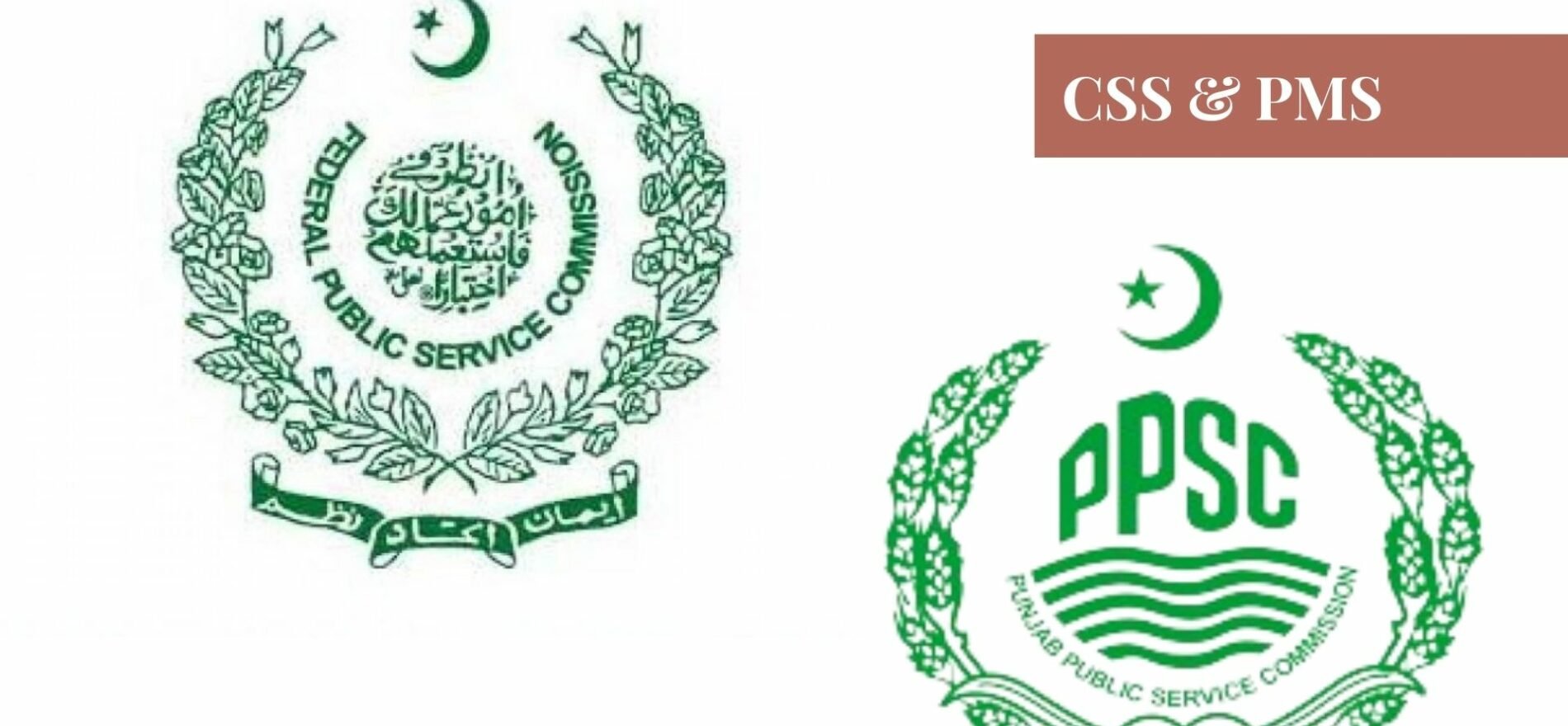Ms. Rida Naeem is a PMS Punjab 2018 and 2020 qualifier. She has been mentoring CSS aspirants for 5 years.
The Central Superior Services (CSS) examination and the Provincial Management Services (PMS) examination are widely recognized as two of the most prestigious civil service exams in Pakistan. These examinations have become highly coveted among the youth aspiring to pursue a career in the civil service. The Federal Public Service Commission (FPSC) administers the CSS examination to select candidates for various Occupational Groups and Services at the federal level, while Provincial Service Commissions primarily rely on the PMS examination to identify ideal candidates for provincial administration.
Provincial service commissions conduct their own PMS exams. There are a few similarities between CSS and PMS examinations as well as certain distinct differences. Knowing the similarities and differences is crucial for civil service aspirants. In this way, aspirants can make an informed choice and adjust their preparation strategy accordingly.
Commonalities of CSS and PMS Exams
It is important to first understand the common aspects of CSS and PMS examinations.
- Age Limit
The age limit for both CSS and PMS examinations is the same. A candidate must be between 21 and 30 years of age.
- Educational Qualifications
For both CSS and PMS educational qualification is a second-division or grade “C” bachelor’s degree.
- Selection Process
The selection process for both the CSS and PMS examinations is also similar. It includes written examinations and interviews. After the written examinations, candidates qualify for the interview stage, which involves psychological assessments and final interviews.
- Syllabus and Subject Coverage
Both the CSS and PMS examinations include common compulsory subjects such as Pakistan affairs, English essays, English precis and composition, and Islamic studies besides Urdu and general knowledge (general knowledge carries negative marking). In optional subjects, political science, public administration, sociology, psychology, and mass communication, among others, are common subjects, but their syllabus coverage may vary.
Differences between CSS and PMS
Moving on to the differences between CSS and PMS examinations:
- PMS Punjab includes a general knowledge MCQs paper as a compulsory subject, whereas CSS has a 200-mark screening MCQs paper known as the preliminary exam.
- PMS Punjab does not include current affairs and general science and ability as compulsory subjects, unlike CSS, where these subjects are mandatory.
- In PMS Punjab, candidates have to choose only three optional subjects of 200 marks each from various groups. In contrast, for CSS, candidates have to choose at least five subjects as optional, including one subject of 200 marks and others of 100 marks each.
- CSS examinations have a fixed schedule and take place yearly in February. On the other hand, PMS examinations take place yearly but do not have a fixed schedule.
- CSS offers allocation to any one of the 12 occupational groups at the federal level. In contrast, PMS primarily allocates candidates within the provincial government, with positions such as assistant commissioner, section officer, and roles in excise and taxation departments.
- The most significant difference lies in the nature of question papers and paper-attempting techniques. CSS has a set pattern with 20 marks for objective papers and 80 marks for subjective questions. PMS Punjab has fill-in-the-blank questions in the compulsory Pakistan Affairs paper and only subjective questions, 5 in total with 20 marks each, in the optional papers. Paper-attempting techniques also differ, with PMS requiring attention to answer length and visual presentation. However, both exams emphasize the use of the inverted funnel approach for answering questions, along with visual presentation techniques such as graphs and flowcharts. Practical application and the inclusion of Pakistan’s perspective are also crucial aspects of answer attempts in both examinations.
Regardless of the examination, success in these exams requires diligent preparation, smart study, and persistent hard work. Aspirants should engage in a rigorous and consistent study schedule, encompassing a comprehensive understanding of the subjects and topics relevant to the chosen examination. They should make use of available resources, and actively participate in mock exams and practice sessions to enhance their exam-taking skills.
So, to all the aspirants out there, carefully formulate your study plans, make an informed decision, and embark on your preparation journey with passion and dedication. Believe in yourself, stay focused, and persevere, for success in the CSS and PMS examinations awaits those who are willing to put in the effort.
If you’re interested in CSS or PMS examinations and want to learn more about them, sign up for Rida Naeem’s mentorship classes here.
If you want to submit your articles, research papers, and book reviews, please check the Submissions page.
The views and opinions expressed in this article/paper are the author’s own and do not necessarily reflect the editorial position of Paradigm Shift.



















